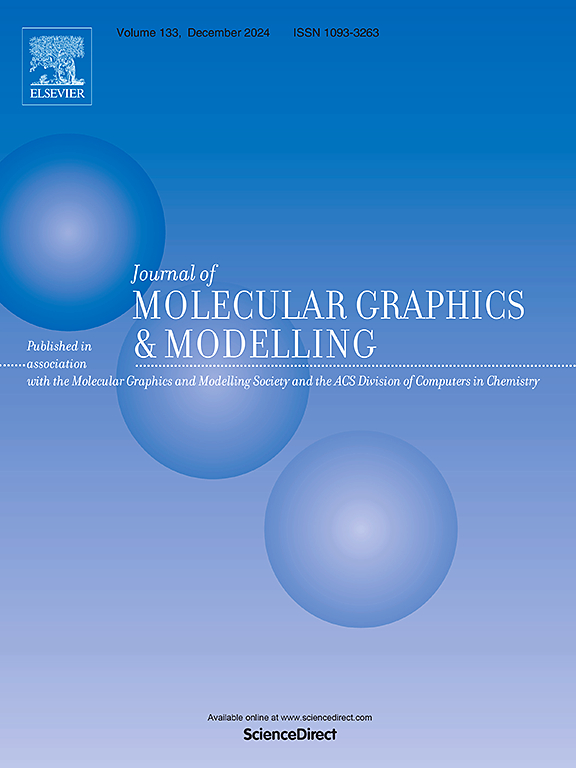Application of machine learning approaches for estimating carbon dioxide absorption capacity of a variety of blended imidazolium-based ionic liquids
IF 3
4区 生物学
Q2 BIOCHEMICAL RESEARCH METHODS
引用次数: 0
Abstract
Ionic liquids (ILs) have gained attention in recent times as potentially effective absorbents for CO2 emissions owing to the number of their notable attributes, including reduced volatility, enhanced thermal consistency etc. Due to the number of challenges of thermodynamic models in forecasting CO2 solubility in ILs under a variety of operating conditions, machine learning (ML) approaches have been developed as a result of the necessity for an alternate solution. Nevertheless, there are currently quite a few of forecasting techniques available for evaluating the solubility of CO2, specifically in combinations of imidazolium-based ILs. For this reason, the present study focuses on the utilization of molecular structure-based descriptors as an alternative chemistry concept for predicting the CO2 solubility in an imidazolium-based ILs mixture. This research utilized and contrasted 6 sophisticated machine learning models (AdaBoost-SVR, Extra trees, DT, CatBoost, LightGBM, XGBoost) to determine the most effective method for target parameter estimation. The study employed an exclusive and all-encompassing databank consisting of 43 imidazolium-based ILs, 26 input variables, and 4397 experimental data points in total. The remarkable 90 % overall accuracy consistently surpassed by all models serves as evidence of the ML methodologies' robustness and efficacy. The highest-performing approaches, XGBoost, exhibited a remarkable precision level of R2 being equal to 0.999 and RMSE of 0.0077. A comprehensive trend analysis was performed to assess the XGBoost model's performance across different operational scenarios such as molecular weight, temperature, water content, and pressure. The developed model proved to be capable of accurately detecting patterns in various operating conditions. By employing sensitivity analysis with SHAP values, it was observed that pressure, temperature, and molecular weight were the most impactful factors influencing the XGBoost model's predictions.

应用机器学习方法估计各种混合咪唑基离子液体的二氧化碳吸收能力
离子液体(ILs)由于其显著的特性,包括降低挥发性、增强热一致性等,近年来作为潜在的有效的二氧化碳吸收剂而受到关注。由于热力学模型在各种操作条件下预测CO2在il中的溶解度存在许多挑战,因此机器学习(ML)方法已经被开发出来作为替代解决方案的必要性。尽管如此,目前有相当多的预测技术可用于评价CO2的溶解度,特别是在咪唑基il的组合中。因此,本研究的重点是利用基于分子结构的描述符作为替代化学概念来预测CO2在咪唑基il混合物中的溶解度。本研究利用并对比了AdaBoost-SVR、Extra trees、DT、CatBoost、LightGBM、XGBoost 6种复杂的机器学习模型,以确定最有效的目标参数估计方法。本研究采用了一个包含43个咪唑类il、26个输入变量和4397个实验数据点的数据库。所有模型始终超过90%的显着总体准确率,这证明了机器学习方法的鲁棒性和有效性。其中表现最好的XGBoost方法,其精度水平R2为0.999,RMSE为0.0077。通过全面的趋势分析,评估了XGBoost模型在不同操作场景(如分子量、温度、含水量和压力)下的性能。所开发的模型被证明能够在各种操作条件下准确地检测模式。利用SHAP值进行敏感性分析,发现压力、温度和分子量是影响XGBoost模型预测结果的主要因素。
本文章由计算机程序翻译,如有差异,请以英文原文为准。
求助全文
约1分钟内获得全文
求助全文
来源期刊

Journal of molecular graphics & modelling
生物-计算机:跨学科应用
CiteScore
5.50
自引率
6.90%
发文量
216
审稿时长
35 days
期刊介绍:
The Journal of Molecular Graphics and Modelling is devoted to the publication of papers on the uses of computers in theoretical investigations of molecular structure, function, interaction, and design. The scope of the journal includes all aspects of molecular modeling and computational chemistry, including, for instance, the study of molecular shape and properties, molecular simulations, protein and polymer engineering, drug design, materials design, structure-activity and structure-property relationships, database mining, and compound library design.
As a primary research journal, JMGM seeks to bring new knowledge to the attention of our readers. As such, submissions to the journal need to not only report results, but must draw conclusions and explore implications of the work presented. Authors are strongly encouraged to bear this in mind when preparing manuscripts. Routine applications of standard modelling approaches, providing only very limited new scientific insight, will not meet our criteria for publication. Reproducibility of reported calculations is an important issue. Wherever possible, we urge authors to enhance their papers with Supplementary Data, for example, in QSAR studies machine-readable versions of molecular datasets or in the development of new force-field parameters versions of the topology and force field parameter files. Routine applications of existing methods that do not lead to genuinely new insight will not be considered.
 求助内容:
求助内容: 应助结果提醒方式:
应助结果提醒方式:


